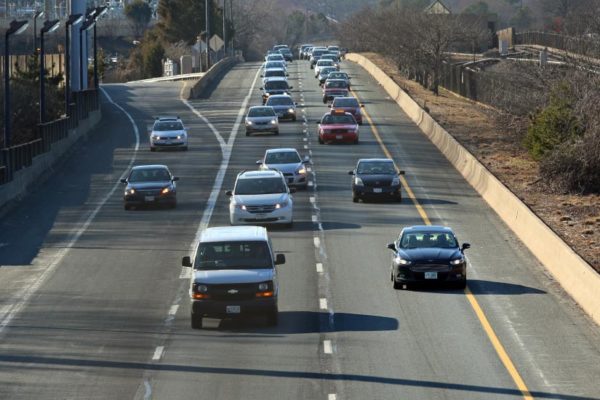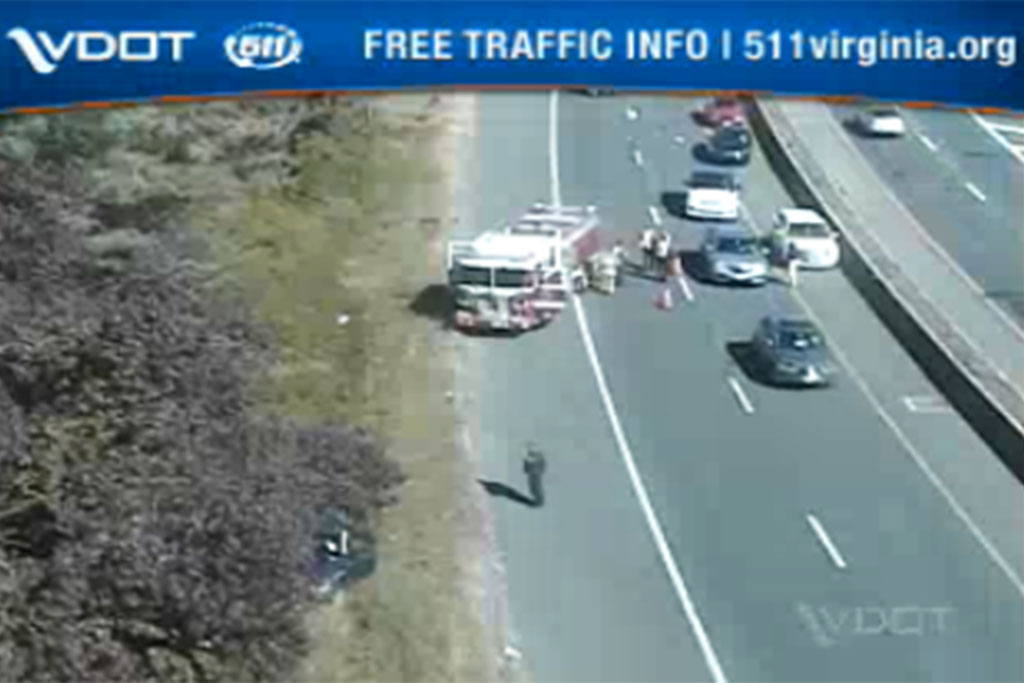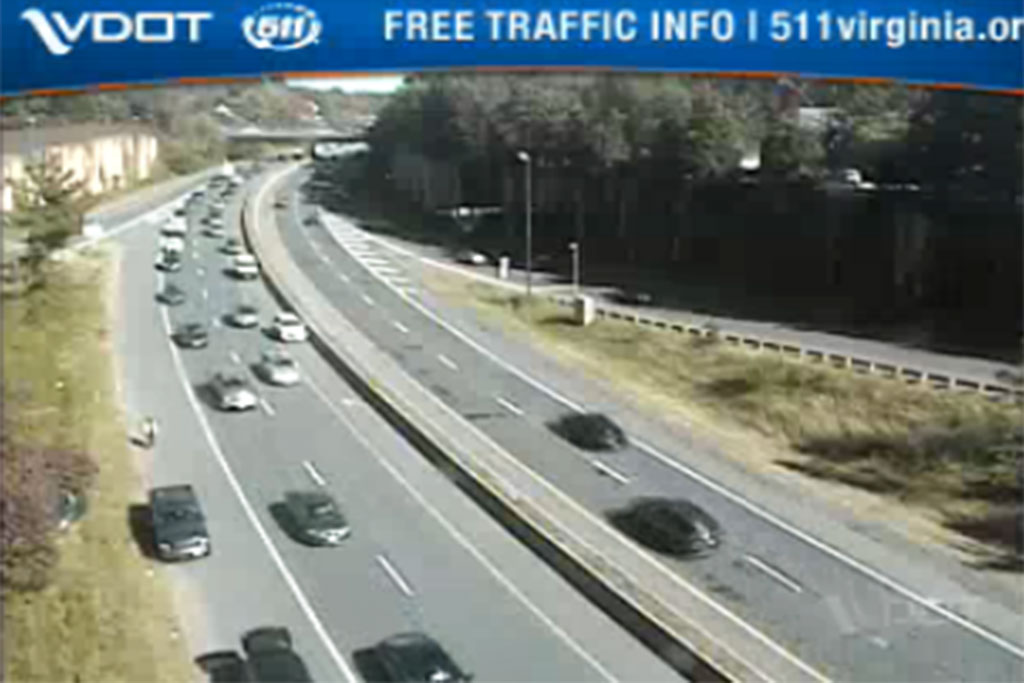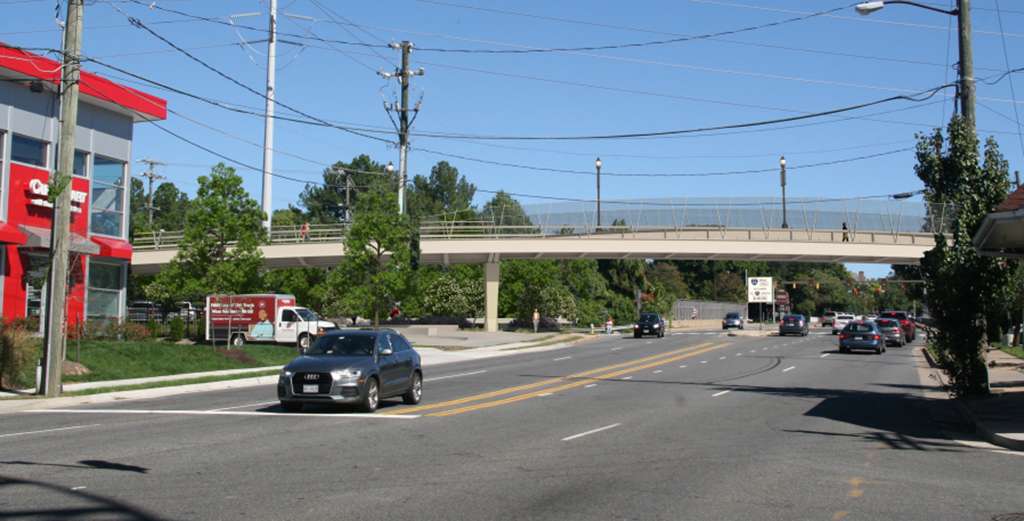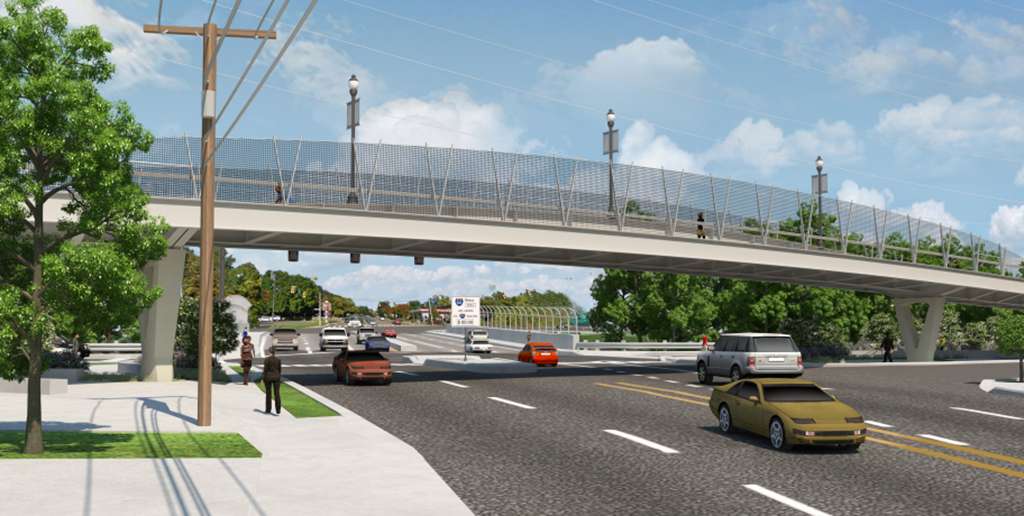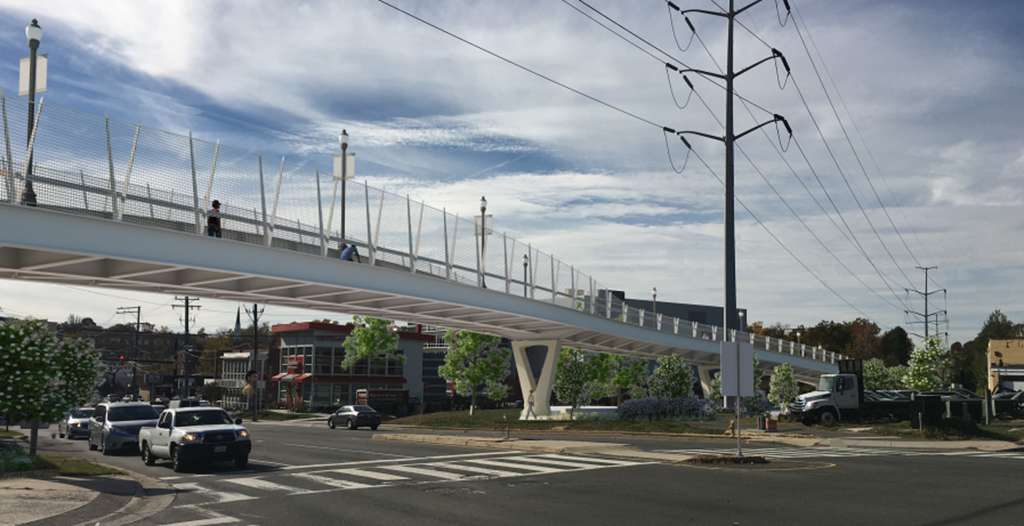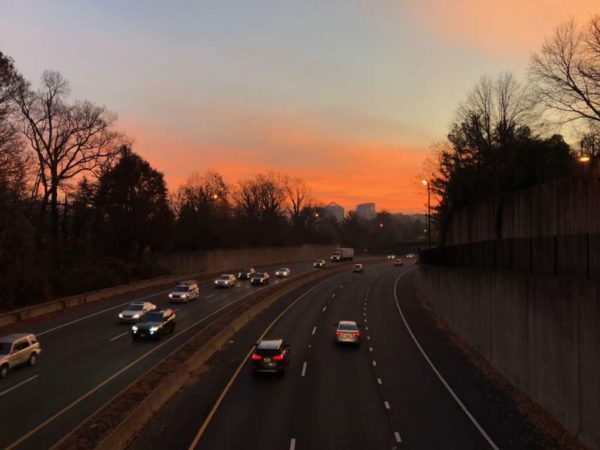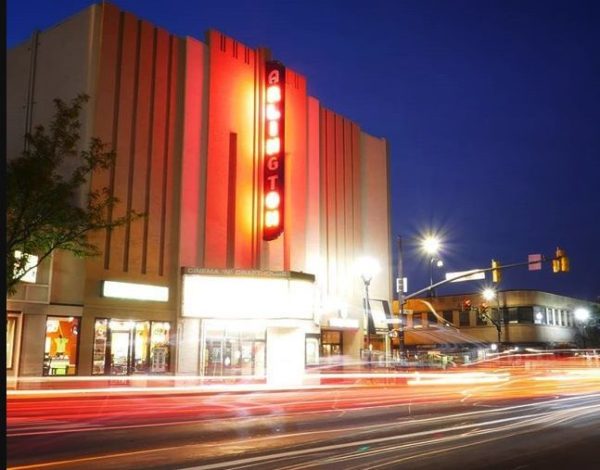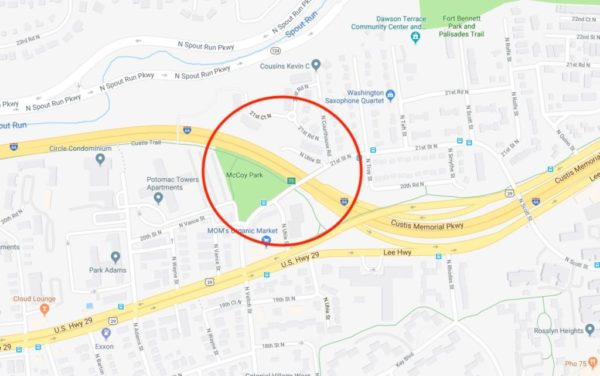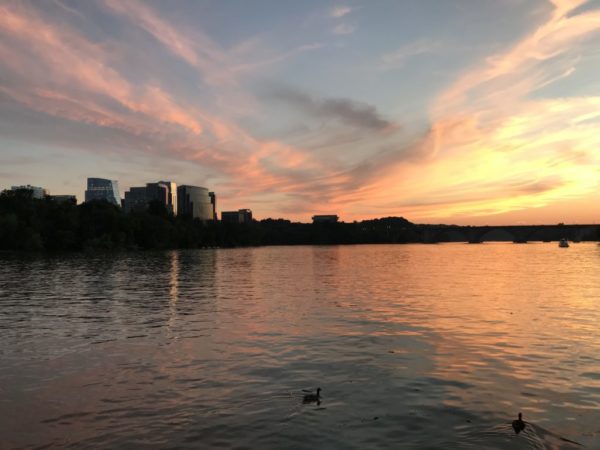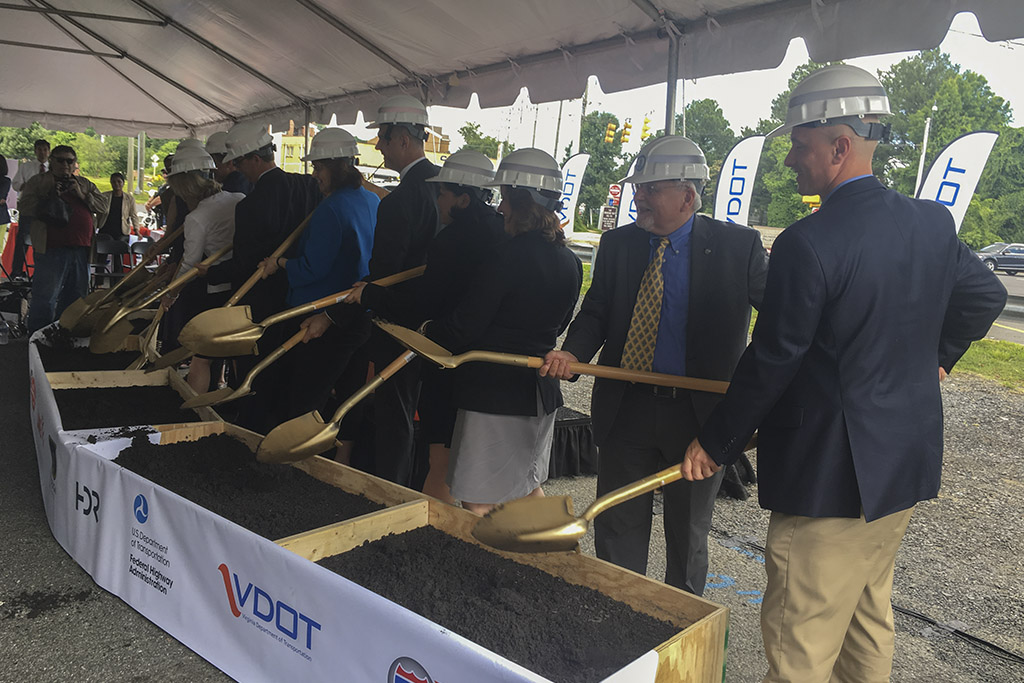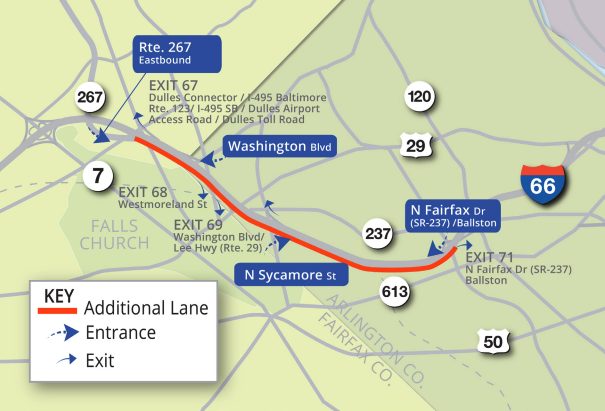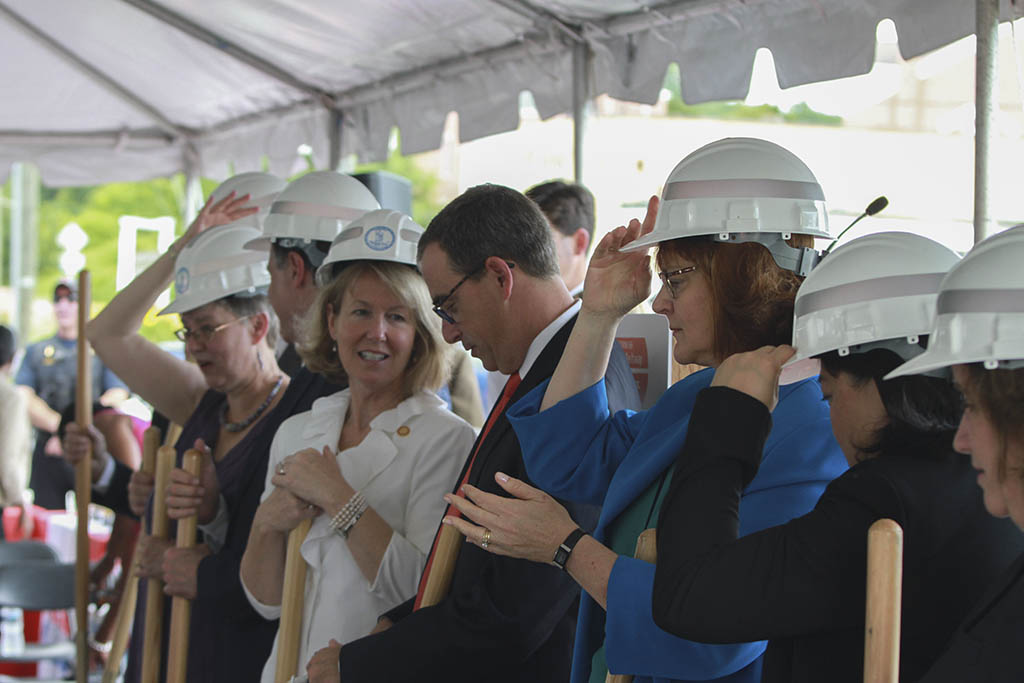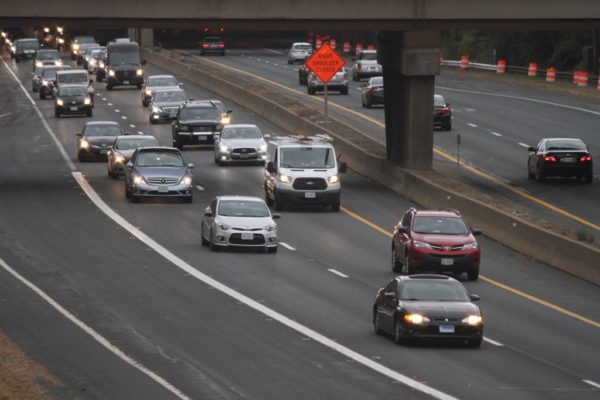
The new tolls on I-66 inside the Beltway may be steep, but new data suggest they have yet to convince people to turn to Arlington’s public transit options instead of driving.
The rush hour tolls have been in place on I-66 between Rosslyn and the Beltway since December, but a new report by the Northern Virginia Transportation Commission does not show any substantial increase in Metrorail or local bus ridership around Arlington.
The regional transportation planning group’s researchers did find some upticks in express bus ridership in Fairfax and Prince William counties, which benefits from fewer rush hour traffic delays on I-66 post-tolling. Yet NVTC staff stresses that there is currently no clear evidence that the tolls, designed to convince commuters to carpool or turn to public transit to ease congestion on the highway, are having their desired effect broadly.
“While public transportation systems transport significant numbers of commuters from the Washington, D.C. suburbs to downtown, overall transit ridership in Northern Virginia has shown a gradual decline, which is influenced by employer transit benefits, transit service reliability, telework, and real estate development, among others,” the NVTC report reads. “However, new commuter and express bus services supported by the I-66 Commuter Choice [tolling] program have demonstrated stable demand and are expected to grow.”
The group examined ridership data on Metro’s Orange and Silver lines, running between stations west of the Ballston stop and Ballston itself, as well as between Ballston and stations east of it. For the month of February, the NVTC found that ridership increased by about 4 percent from the same month in 2017.
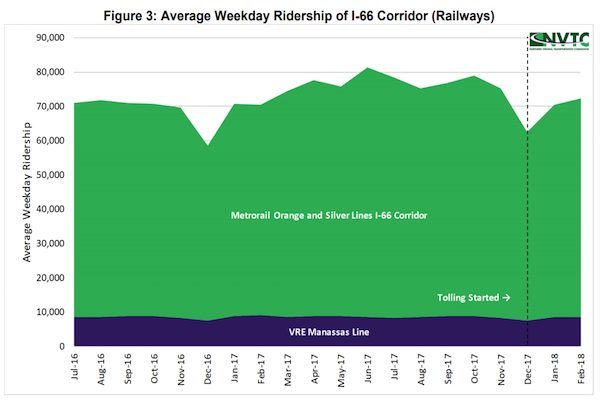
However, staff noted that could be due to the transit system’s recovery from its “SafeTrack” maintenance program, noting that “it is difficult to discern the influence of I-66 tolling from these statistics.”
The NVTC also found that bus ridership in the I-66 corridor declined from a similar time period a year ago, particularly in Arlington. Staff found that Arlington Transit routes along the corridor dropped by a total of 12 percent when comparing February 2018 to the same month last year, and Metrobus ridership in the area fell by 10 percent.
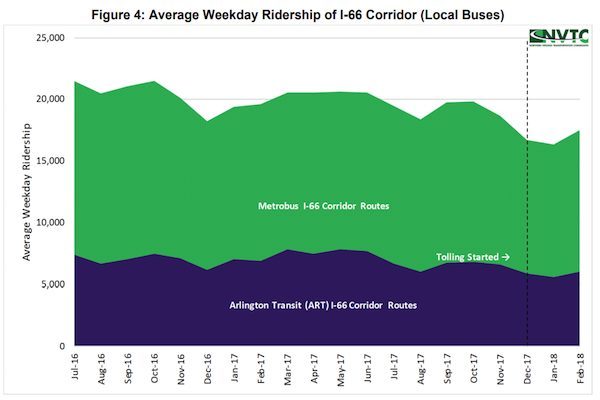
The new tolls helped local bus services run some buses more frequently along the corridor, but the group found declines in ridership on those routes too. For instance, ART started running buses on its 55 route once every 12 minutes during rush hour starting in June 2017, yet ridership fell by 7 percent when comparing February 2018 to February 2017.
Similarly, 2A Metrobuses now run every 10 minutes instead of every 15 during periods of peak ridership — and the route saw a 10 percent drop in riders, the report found.
However, the NVTC noted that bus ridership “declines persist before and after the I-66 tolling,” not only in Arlington in recent years, but also across the region and even the country.
They’re also hopeful that commuters are still taking time to adjust to the beefed up transit options, and are merely taking time to adjust their schedules accordingly.
“The public transportation service capacity added in FY2017 through the I-66 Commuter Choice program has met with stable demand,” staff wrote. “A ramp-up in demand is expected in the coming years.”
File photo. Charts via NVTC.


